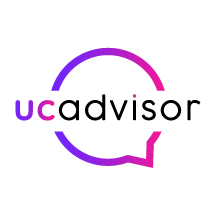
20 Dec Your Guide to Implementing a New CCaaS Solution
Customer experience is now the most essential consideration for any business.
Even with the world’s best features and price points, you’ll struggle to engage your audience if you’re not delivering the meaningful experiences that they expect.
That’s where the contact centre comes in. The contact centre forms the heart of the interactions between companies and their customers. Unfortunately, the old-fashioned or traditional contact centre might not be as efficient as it once was in this regard.
As your marketplace changes and shifts, and the needs of customers transform, a traditional contact centre makes it difficult to evolve rapidly with the times. Clunky and expensive equipment can harm the agility of growing companies. On the other hand, cloud-based contact centres delivered through CCaaS makes rapid transformation much easier.
Studies from Forrester even found that moving your contact centre into the cloud can increase satisfaction scores from 59% to 85%.
What is CCaaS, and How Does it Work?
CCaaS refers to Contact Centre as a Service. This is a cloud-based strategy for delivering all the software that a company needs for its contact centre, without the need for complex hardware or provisioning. CCaaS systems are often designed to work with the existing technology that you have in your business, as well as external devices, for remote workers.
CCaaS simplifies the process of building a future-ready contact centre. Because you’re investing in a software solution on the cloud, your initial investment costs are often lower than they are with traditional contact centres. Additionally, the costs of maintain your environment are often easier to plan too, with pay-as-you-go pricing.
CCaaS technology also includes all of the essential tools that you would expect from any contact centre, such as call routing, recording, and management systems. However, it gives you the freedom to expand your functionality and even add new people to your contact centre whenever you choose. This could mean unlocking access to things like:
- Call analytics and customer experience tracking
- Call recording and management systems
- Virtual assistants and artificial intelligence
- Intelligent IVR and call routing
- CRM integrations and other crucial extensions
- Workforce optimisation and management
What’s more, because service comes bundled in with your contact centre solution, you don’t have to worry about investing extra time and money into maintaining your contact centre on your end. The vendor you work with handles that for you.
How to deploy CCaaS
It’s easier to set up a contact center solution in the cloud than traditional telecom options.
It uses Voice over Internet Protocol (VoIP) to place and receive calls over the internet. All you need to deploy CCaaS is an internet connection, workstations, and headsets.
The CCaaS provider manages the rest of the contact center infrastructure. You would then adjust your company’s IVR, automatic call distribution (ACD), and workflow automation in an online portal.
To begin responding to support requests, team members sign into the contact center software. Supervisors can always watch call queues and team availability, so everything runs smoothly.
There are a handful of areas to think about when moving to a CCaaS environment:
- Understanding your customer contact channels
- Transferring phone numbers from another provider
- Assigning user permissions, ticket handling, and call queues
- Planning out the ideal call flow for incoming calls and tickets
You don’t have to deploy your call center by yourself. Nextiva offers professional onboarding, so you can plan everything out and launch on time.
Related: The Pros & Cons of Cloud vs. On-Premises PBX Systems
Tips for choosing the best platform
Selecting the right Contact Center as a Service platform ensures employees can satisfy customers no matter how they reach you.
A virtual phone system is a better fit for most companies because it offers the most flexibility. If your customer interactions aren’t all that repetitive, then it’s perfect for you.
A contact center is ideal if you have consistent customer requests, orders, or helpdesk tickets. It contours itself around your unique company needs and does so at scale. Plus, you can merge voice, email, text, and social media in one omnichannel solution.
As you explore your options, here are some questions think about:
- What are your priorities? It’s easy to get excited about all the features and perks of a new communication platform. Determine if you want a universal solution for everyone (UCaaS) or a solution tailored to a sales or customer service department (CCaaS).
- How easy is it to add users? You might start with 20 agents today, but you’ll be at 60 by the end of the year. Understanding how to add and manage users can be a big timesaver.
- Do you need any app integrations? Knowing which integrations you need is tricky since UCaaS replaces existing business apps. Check to see if your platform offers a built-in email or CRM integration.
- What support options are available to you? Most contact center providers charge extra for live support and onboarding. Get to know how to get in touch and if it’s 24/7 support or if it’s limited.
- What resources will you need? Not all UCaaS or CCaaS solutions are simple to use, so take the time to see how easy it is to manage. Anyone without extensive IT experience can set up and enjoy Nextiva.
- Which features do you need? Think about what obligations your company has today and in the future. For instance, HIPAA or PCI, or other recordkeeping requirements. Compile a list of features like call recording, interactive voice response, analytics, audio conferencing, and video meetings.
CCaaS Trends
As the cloud technology responsible for enabling CCaaS continues to evolve, the experiences that businesses can create in this environment are transforming too. Leading vendors in the marketplace are discovering new ways to improve both user and customer experience in the cloud, with technology that’s more intuitive and informative than before.
In some places, vendors are even combining other as-a-service technologies on the cloud together, to allow for a more complete single-pane-of-glass environment for the contact centre. Some of the most appealing CCaaS trends right now include:
- The complete aaS environment: Contact Centre as a Service is a solution increasingly offered by business leaders as an add-on to the UCaaS (Unified Communications as a Service) environment. As companies try to cut down the number of tools that employees need to jump between to stay productive, it’s likely we’ll see an increase in customisable as-a-service stacks, empowered by technology like CPaaS and APIs for more modular control.
- Workforce Optimization and Management: Workforce optimization or management tools are also increasing in popularity as business leaders continue to explore options like remote and distance working. WFM and WFO technology built into the contact centre provides a more complete overview of how all teams are operating, regardless of whether they’re inside or outside of the office. These tools can also open the door for gamification, using scoreboards and leaderboards to help team members stay motivated.
- Analytics and customer journey mapping: Analytics are an exciting potential add-on to the contact centre experience. As companies continue to gather huge amounts of data from omnichannel interactions in the cloud, analytics systems will open the door for useful insights. These insights could be essential to figuring out the unique steps customers take when making a purchase with your business. Analytics allow businesses to map customer journeys and deliver better experiences from start to finish.
- AI and Virtual Assistants: We’re a long way off from artificial intelligence being able to replace the human contact centre agent. However, in the CCaaS environment, it is possible for business leaders to empower their employees with AI technology. Tools like speech recognition services can track the sentiment in a voice and determine when an agent needs extra help. AI can also track trending questions or use voice biometrics to pop up valuable information that agents may need to contextualise a conversation.
- Improved security: The arrival of new technology for biometrics and speech recognition could also unlock new methods of security in the contact centre. Toll fraud and similar issues have long plagued the call centre environment. With unique voice fingerprints and other analytical strategies, business leaders could reduce the risk of allowing the wrong people to gain access to crucial customer details.
1. Prioritize User Experience
When implementing a new CCaaS solution, a lot of companies get caught up focusing on how the technology is going to drive a better customer experience. However, in most cases, a good customer experience today starts with an amazing agent experience. If your remote, hybrid, and on-premise contact centre agents are going to be using this technology every day to connect with clients on multiple channels, it needs to be easy to use.
Think about how the technology prioritizes user experience to ensure your employees can use the technology wherever they are with as little support as possible. For instance, many modern CCaaS solutions come with back-end collaboration systems where employees can reach out through chat to available agents to get assistance when they’re struggling.
Your CCaaS tools may also have in-built virtual assistants and chatbots which can answer common questions about how to add a call to a queue or how to upload customer information to a CRM system from the contact centre. This should mean that your employees can address their queries without having to contact a member of tech support.
Other ways to ensure your CCaaS solution supports great user experience include looking for:
- A clean user interface that works anywhere: A good CCaaS solution should have a simple, clean, and easy-to-navigate interface which works just as well on smart phones and mobile devices as laptops and computers.
- Excellent management tools: Good management and control tools will allow your business leaders to provision tools and offer access to different CCaaS features remotely, without the need for excessive input from users.
- Integrations: Your CCaaS solutions should naturally integrate with the tools your agents already use, like service desks and CRMs, so they don’t have to run multiple apps at the same time.
2. Roll Out Technology Slowly
As important as it is for many companies to make the transition to the digital contact centre today, this doesn’t mean that adoption and innovation should be rushed. Most companies will need to make the transition gradually to avoid overwhelming employees.
Start by introducing your CCaaS technology to some of the first adopters in your business – these are the people most likely to be comfortable using new technology and advocating the use of that tech to others. Gather as much feedback as you can from these initial adopters on what’s good about the CCaaS solution, what they’d like to change, and which features they struggle with.
When you’re comfortable that your first adopters are happy with the software, you can start to introduce it to a wider group of employees, allowing your informed initial users to act as mentors for the new teams. Rolling technology out slowly will help you to respond immediately to any issues your employees have. You should also be able to use this strategy to reduce the risk of downtime.
Be aware that some employees in your ecosystem may need additional support and guidance. These late adopters might need more training than the rest of your staff, or one-on-one guidance to feel fully comfortable with the new software. Ensure you’re dedicating enough time and budget to get everyone on-board, and ready to use the technology every day.
Plan your Post Implementation Strategy
Finally, once you’ve rolled the technology for your new CCaaS solution out to your entire team, it’s time to measure, and collect information to determine whether your rollout has been a success. You should have started this CCaaS adoption plan with certain goals in mind. So, it’s important to have a plan for how you’re going to track your progress.
For instance, if your original goal was to improve customer satisfaction and loyalty, you can track metrics like CSAT score, Net Promoter Score, and even retention levels or customer lifetime value. It’s also worth collecting as much feedback as possible from your customers about their perception of your new customer service strategy and whether they think it’s improving.
Collect information from your contact centre agents too. Pay attention to how efficient and productive these team members are when using the new CCaaS solution. Though you might notice some inefficiencies at first when staff are getting used to the technology, you should gradually see performance levels improving.
Combine your numbers and metrics with the actual insights you get from your employees for guidance on how to continue ensuring adoption among everyone in your team.



